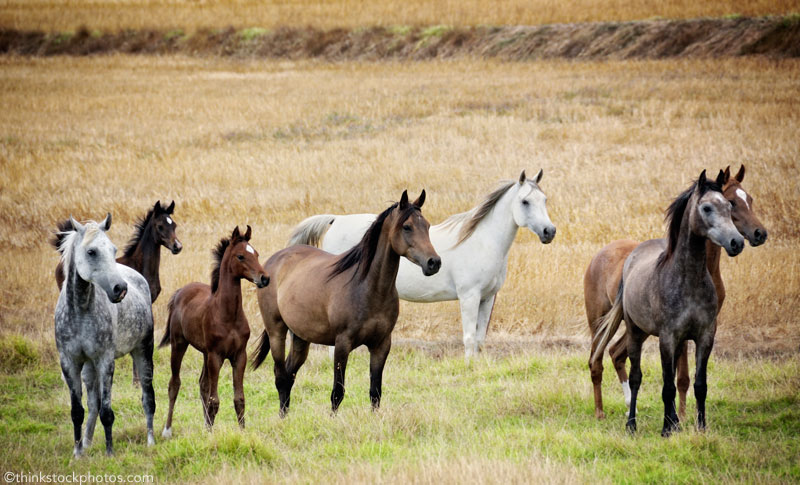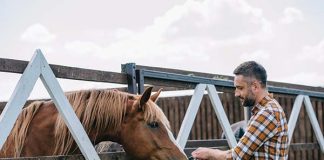
One horse (the alpha) is at the top of the rankings, and all other horses fall into line behind him. No two horses in a herd are equals.
Leadership Over Dominance
Matching human personalities to horses’ positions in the herd can help create the best partnerships. Most riders get along best with horses that are in the middle of the pecking order—not the alpha horse or the omega horse.
An alpha horse requires a strong leader who will not back down if challenged. That doesn’t mean that you have to be mean to work with an alpha horse, but you must be consistent and have clear rules.
If you know that you’re a passive person, don’t choose an alpha horse. And if you’re a rider who has a strong personality, don’t pair yourself with an omega horse that may feel bullied.
Many times the bully horses are the beta, or second in command, horses. They don’t have true leadership ability, but they wish they were the bosses. They challenge the alpha horses daily—and can be the horses that test their riders most often.
When humans are present, horses may still show their herd hierarchy behaviors. Horses “speak” in the language of dominance and hierarchy. In a horse herd, the word “dominant” is correct to use—horses bite, kick, and dominate the space and resources they want to protect and use first.
As a horse owner, you don’t want to think of yourself as dominating your horse. You want a relationship that is built on respect and partnership. However, to achieve that desired relationship, you must consider the horse’s natural behaviors and make sure that you don’t unintentionally show that you are subordinate to your horse.
Finding Order
Where does your horse fall in the herd’s hierarchy? The easiest way to determine the pecking order is by watching the horses’ interactions at feed time.
For example, if you have six horses, lay out five flakes of alfalfa before opening the gate for the horses to enter. The alpha horse will come in first, followed by the rest of the herd in descending order with the omega horse last. The omega horse is at the bottom of the hierarchy and won’t even come near the food if he perceives there is not enough; he’s been beat up too many times before. Keep in mind that the hierarchy can change over time—and that some horses will work their way up through the chain of command.
At feeding time, you must be aware of your interactions with the horses, especially if you have to enter a pen of multiple horses. When you’re feeding, you must make sure that you are not backing away from horses and not allowing horses into your space when you arrive with food.
To be clear about your personal space, wave horses away from the food until you have dropped it and walked away on your own. Only when you walk away from the food should the horse take his turn to feed.
If a horse comes up and grabs hay out of your arms, or if you drop the hay and walk away, the horse sees that you are subordinate. He took food away from you or caused you to move out of his space.
That herd dynamic also applies to when you’re leading your horse and when you ride. If he perceives that he can make the choices and control your space, you invite him to become pushy and to make decisions about where to move and how fast to get there.
There are few things more fun than watching how horses interact. Once you see how tuned in your horse is to the space of others, you’ll start to pay more attention to how you move in his presence. If you play the part of the confident leader, you’ll have the best and safest relationship with him.
This article originally appeared in the October 2017 issue of Horse Illustrated magazine. Click here to subscribe!





